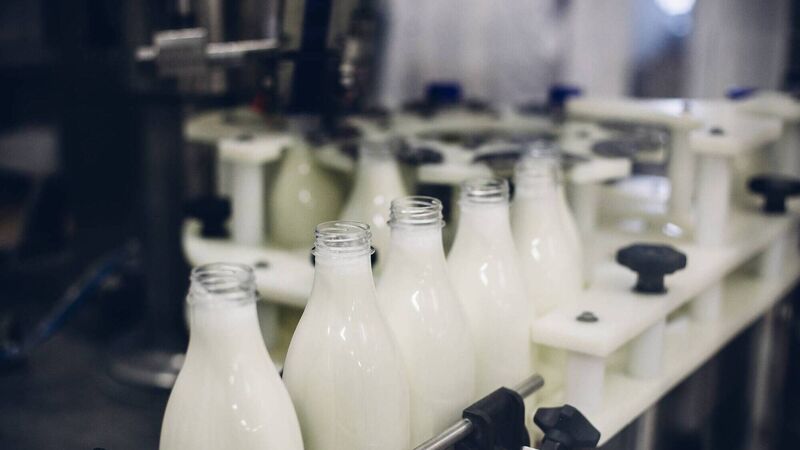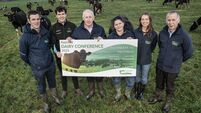Stephen Cadogan: Fine weather, full tanks and falling prices — the dairy paradox of 2025

Milk prices remained strong this year until the autumn, running about 7% higher than 2024, but the cycle has turned downwards at the worst possible time, and 2026 now looks challenging, whether or not the nitrates derogation is retained.
What a difference a couple of months make in farming? Milk prices remained strong this year until the autumn, running about 7% higher than 2024.
In August, Teagasc predicted the average dairy farm income could reach €140,000 this year, 30% higher than 2024. Following a 119% increase in income from the 2023 slump to 2024, dairy farmers could console themselves that the nitrates derogation risk was cushioned by profitability.
But the cycle has turned downwards at the worst possible time, and 2026 now looks challenging, whether or not the nitrates derogation is retained.
Milk price volatility is not new. It fell from 2014 to an EU average in 2016 of about 26c, before recovering to a 32-37c range from 2017 to 2021. It jumped to record heights in 2023, after Russia invaded Ukraine. Unfortunately, production costs jumped at the same time, and have remained relatively high.
Exposed to global market swings, it's not a steady business, and the threat to Ireland's nitrate derogation has grievously dented confidence at a time of falling prices which calls for battening down the hatches and waiting out a slump.
Unfortunately, the world is suddenly awash with milk supplies, so the price of dairy products and of milk must fall.
With farmers' figures and budget projections examined by IFAC accountants revealing an average 42cpl milk production cost for 2025, and co-ops cutting milk prices, dairy farmers have been advised to prepare for the possibility of base prices falling below production costs in 2026.
Meanwhile, as farmers listen to the dire climate warnings from the ongoing United Nations Climate Change Conference in Brazil, the irony will not be lost on them that it was fine weather this year that turned dairy markets down.
It is thanks to fine weather that New Zealand dairy farmers are celebrating their biggest milk deliveries to processing plants for many years. And in our corner of the globe, Irish milk supplies have reached new records, with cumulative milk solids up by about 7% for January to August.
Unfortunately, with both countries being huge dairy exporters, markets are over-supplied, and price reductions are coming through all the way back to farmers.
Working close to nature as they do, farmers here realise that 2025's ideal mix of rain, sun, wind and temperatures allowed agriculture to thrive. The UK has a lot of outdoor dairy farming also, and the weather there has enabled milk production to push 6% up on last year.
But it was unexpected fine September weather at the other side of the world that has turned dairy markets from shortage to surplus.
In New Zealand, where the normal weather could most charitably be described as mixed, unseasonably warm and dry September weather created near-perfect grazing conditions and fueled Fonterra’s biggest monthly collection volume in many years (6.3% ahead of the same month last year).
While the North Island saw a 5.6% increase, the South Island boosted milk solids collections by 7.6%. This followed record production in August, and in a country that exports 95% of its dairy produce, it helped to tip the global market balance.
Here in Ireland, the autumn hedges laden down with berries and fruit, and orchards that were drooping with the weight of apples, told the story of a year of ideal weather for farmers, conspiring to cause over-production. even as climate action adds to farmers' costs.
Meanwhile, the USA's huge dairy industry has achieved milk production increases in some states of double-digit percentages. Weather and climate change are of little consequence there, because most of the production is indoors, and climate action is being dismantled bit-by-bit by the Trump administration.
But the increased production has further depressed global markets, as the USA becomes a net exporter for some dairy products.
Global dairy prices, especially for butter and cheese, have declined sharply due to oversupply. This may not be all bad news, with Bord Bia saying this creates opportunities for Irish exporters to gain market share, particularly in China and Southeast Asia, where Irish products are increasingly competitive.
And global imports might pick up, as lower prices stimulate buying. Bord Bia has said regions such as Algeria and Southeast Asia present immediate opportunities for Irish exporters, especially in powders and cheese.
The other bright spot, of course, for dairy farmers, is the worldwide strong cattle market. But it might delay dairy market recovery if farmers losing money on milk are insulated by high prices for calves and culls.












